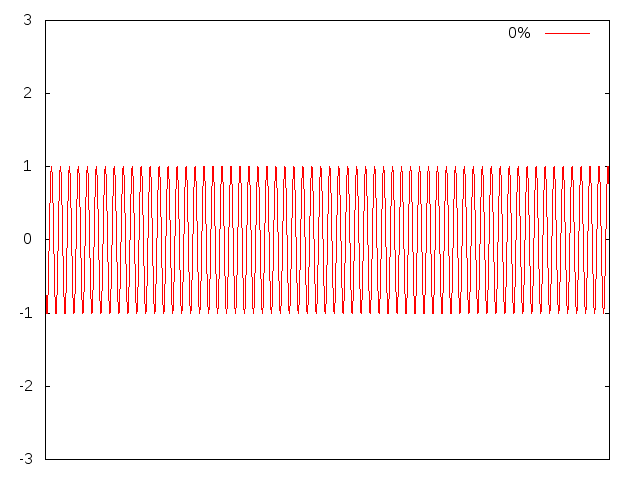The Wikipedia article is very short and doesn't explain the concept very well, and there aren't any other sites that I can find that give a simple explanation. What does it mean by 100% modulation? I understand the basic concepts behind amplitude modulation, frequency modulation, and pulse width modulation, but I have never really understood what is meant by the "amount" of modulation or modulation depth.
Can somebody please shed some light on the subject?
Thanks!
Answer
In the image below a amplitude modulated sine wave:
- 0% unmodulated, the sine envelope is not visible at all;
- < 100% modulation depth is normal AM use;
- 100% modulation depth, the sine envelope touch at y=0. Maximum modulation that can be retrieved with an envelope detector without distortion;
- > 100% modulation depth, "overmodulation", the original sine wave can no longer be detected with an envelope detector.

A still overview of the most important modulation depths (0, 50, 100 and 200%):

The animation was created using gnuplot using the following script:
unset xtics
set yrange [-3:3]
set samples 10000
do for [d=0:200] { plot sin(2*pi*3*x)*(1+(sin(2*pi*x/10))*d/100) title sprintf("%3i%%",d); }
No comments:
Post a Comment